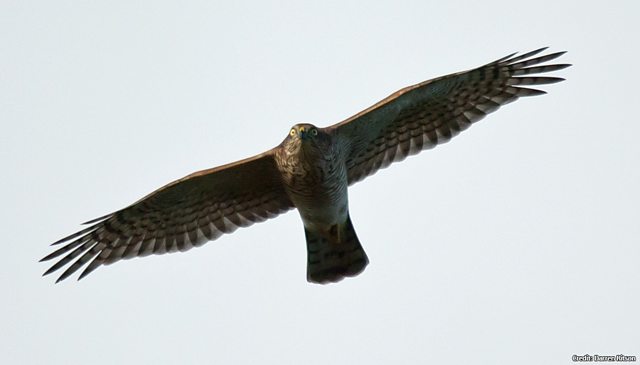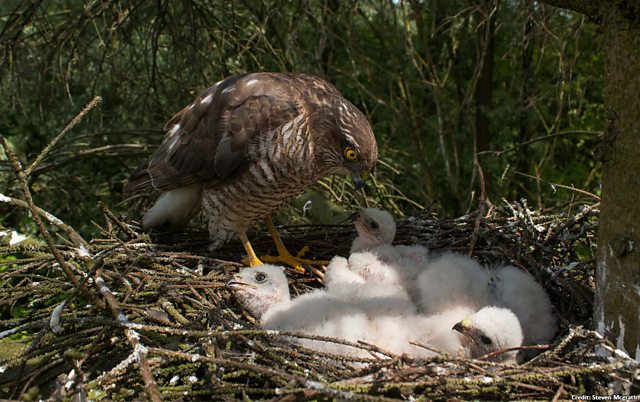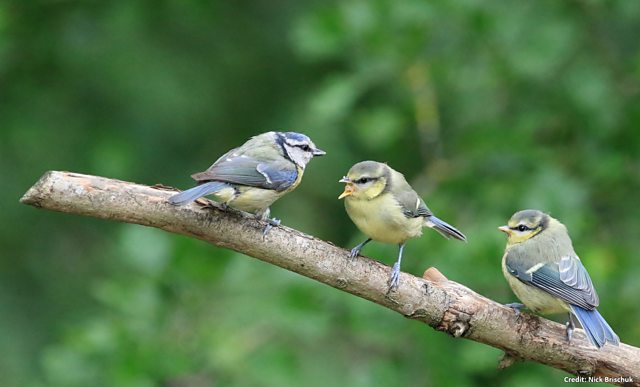BBC Blogs - Springwatch
Sparrowhawks: Friend or foe?

Sparrowhawks are one of our native species of birds celebrated for their majesty, speed and agility. They’re nature’s Top Gun, with awe-inspiring skills and, maybe, an avian predator that we don’t need to vilify for taking our garden birds.

Sparrowhawks can be identified by their short wings and long, blunt tail.

Sparrowhawks have made a dramatic comeback over the past 30 years.

Studies have shown that sparrowhawk presence has no impact on blue tit populations
This research is from the UK but we have a version of this bird in B.C. A woman described to me how she has one that takes a single sparrow daily from her bird feeder. She uses it to teach her grandchildren about wildlife survival. She feels guilty about putting out food for the birds because it sets the ambush BUT that's life...
Denial of Death by Ernst Becker says,
The American kestrel (Falco sparverius), sometimes colloquially known as the sparrow hawk, is a small falcon, and the only kestrelfound in the Americas. It is the most common falcon in North America, and is found in a wide variety of habitats. At 19–21 cm (7–8 in) long, it is also the smallest falcon in North America. It exhibits sexual dimorphism in size and plumage, although both sexes have a rufous back with noticeable barring. Juveniles are similar in plumage to adults.
The American kestrel hunts by hovering in the air with rapid wing beats or perching and scanning the ground for prey. Its diet typically consists of grasshoppers, lizards, mice, and small birds (e.g. sparrows). It nests in cavities in trees, cliffs, buildings, and other structures. The female lays three to seven eggs, which both sexes help to incubate. It is a common bird to be used in falconry, especially by beginners. Though not as aggressive a hunter as many other larger falcons, proper training and weight control by the falconer allows many kestrels to become effective hunters of birds in the size range of sparrows and starlings, with occasional success against birds up to approximately twice their own weight.[2]
Its breeding range extends from central and western Alaska across northern Canada to Nova Scotia, and south throughout North America, into central Mexico and the Caribbean. It is a local breeder in Central America and is widely distributed throughout South America. Most birds breeding in Canada and the northern United States migrate south in the winter. It is an occasional vagrant to western Europe.
Source: https://en.wikipedia.org/wiki/American_kestrelLink: http://www.theguardian.com/environment/gallery/2015/aug/10/diary-of-urban-peregrine-falcon-nest-chicago-in-pictures
BBC Blogs - Springwatch - Sparrowhawks: Friend or foe?:
Source: http://www.bbc.co.uk/blogs/natureuk/entries/43860fa9-d866-4e51-9795-74370a03e169?utm_content=buffer1e633&utm_medium=social&utm_source=twitter.com&utm_campaign=buffer
'via Blog this'
No comments:
Post a Comment